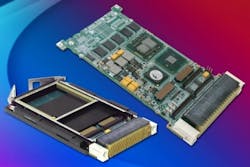General Atomics to develop 150-kilowatt chemical laser weapon in $39.8 million HELLADS contract from DARPA
Among the most promising applications of a relatively lightweight laser weapon are jet fighter self defense; ground defense against incoming rockets, mortars, and artillery rounds; and shipboard self defense against swarms of small attack boats. Laser weapons as strong as 150 kilowatts also could help destroy soft targets on the ground such as unarmored vehicles, radar systems, and communications equipment.
General Atomics has been working on HELLADS development since 2003, and the latest part of the program seeks to develop a laser weapon able to work in realistic military conditions. The company already has developed the technology and system prototypes demonstrating that building a full-up 150-kilowatt solid-state laser weapon is feasible. Textron Defense Systems in Wilmington, Mass., also has been involved in the DARPA HELLADS program.
General Atomics calls its HELLADS design a distributed-gain liquid laser. “It is inherently a combination of a solid-state and a liquid laser. It has attributes of a solid-state laser combined with the efficient cooling of a liquid laser. Liquid is an integral part of the laser itself, and also is the coolant,” Perry explains.
In developing the HELLADS prototype, one of the biggest challenges involved balancing output power with the needs for a laser pump system, laser power supply, and ability to cool the laser by removing waste heat. “Eighty percent of your size and weight is taken up with the diode pump system, power supply, and thermal management," Perry explains.
“We are developing a compact power system, compact thermal storage, and other ancillary packaging we need for the system, as well as lightweight beam control,” Perry says. General Atomics completed a prototype power system and heat-removal system last year.
One approach to enhancing the laser’s efficiency involved reducing the number of diodes in the laser’s pump system to reduce the overall size of the laser.
After General Atomics finishes building the full-up 150-kilowatt laser system, DARPA officials will compete a contract to integrate the General Atomics laser into a prototype laser weapon system, says Richard Bagnell, the HELLADS program manager at DARPA.
For more information contact General Atomics online at www.ga-asi.com, or DARPA at www.darpa.mil.
